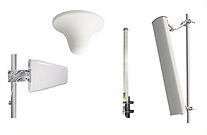Emergency Responder Radio Repeater
Best Defense Designs, Installs, and Services Emergency Responder Radio Repeaters
What is a BDA?
BDA stands for Bi-Directional Amplifier and is also known as a signal booster. These are the main component of a BDA system or ERCES System (Emergency Radio Communication Enhancement System).
A BDA is an amplifier which amplifies radio frequency (RF) signals in two directions simultaneously, both from a subscriber up to the radio repeater system and back down. BDAs improve in-building coverage for radio communications, cellular signals, and are occasionally used for improvements in outdoor coverage.

These systems are frequency band specific in that they are built to amplify one or more frequencies / channels within a specific frequency band. They are designed so that they in no way modulate, modify, or otherwise distort the radio signal – what goes in is what comes out. BDAs are life-safety systems and are usually purchased and installed at the same time as fire alarm systems. They need to be monitored by the building’s fire alarm system per IBC / NFPA rules as supervisory signals.
BDAs are installed and tested by qualified technicians who are FCC GROL licenses and manufacturer certified, and inspected by the AHJ. These systems must meet code requirements and AHJ specifications as AHJ jurisdictions can have different frequency requirements.
Parts of a Bi-Directional Amplifier
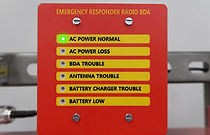
Dedicated Monitoring Panel
A dedicated annunciator panel is required. It is independent from the fire alarm system.

Coaxial Cable
The coaxial cable used is typically plenum rated (a "plenum space" is a part of a building that can facilitate air circulation for heating and air conditioning systems - typically space between the structural ceiling and a dropped ceiling, or under a raised floor) using plastics regulated under the National Fire Protection Association standard NFPA90A. Low insertion loss (a loss of signal power resulting from the insertion of a device in a transmission line) is required. Keep in mind, some AHJs have special labeling requirements.
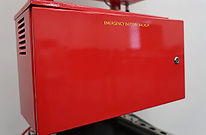
Battery Backup
Battery backup provides 24-hour emergency backup in case of power failure.

RF Connectors
While the RF connectors we use in our BDA systems require installation using a specialized tool, this task is easily handled by our trained technicians.
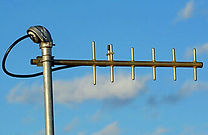
Donor Antenna
A donor antenna is connected to the BDA via coaxial cable. The antenna is typically placed on the roof of the building being serviced and pointed in the direction of the repeater site.
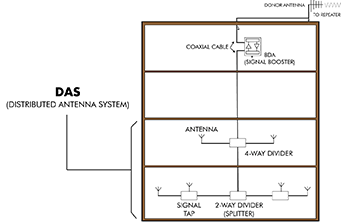
Distributed Antenna System (DAS)
The Distributed Antenna System (DAS) is a network of spatially separated antenna nodes connected to the BDA by coaxial cable. The system is comprised of different components: fiberglass "stick" antennas, signal splitters and couplers, signal taps, and RF connectors.
